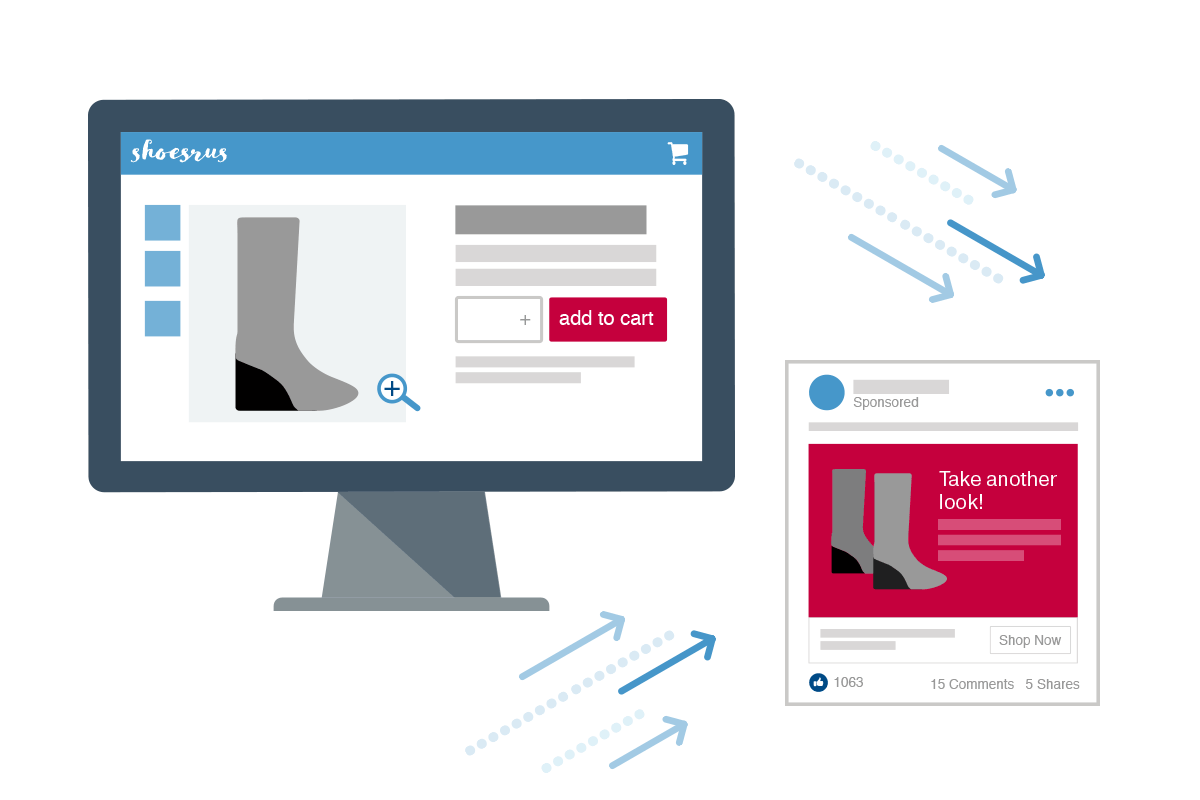How Retargeting Can Bring Customers Back to Your Website

Retargeting (also known as remarketing) is a type of advertising that shows potential customers personalized ads based on their previous interactions with your website.
Retargeting lets you show ads to people who leave your website without making a purchase. Remarketing ads tend to have a higher clickthrough than regular ads because you are showing highly relevant content to people who have already shown an interest in your brand. Not only do they have higher clickthrough rates, retargeting ads also tend to have higher conversion rates, and the more your target customers see an ad, the more likely they are to convert.
How Retargeting Works
Remarking is a process that involves several steps:
- A visitor comes to your website, and is "tagged" with a snippet of code installed on your site.
- As the visitor moves through your site, additional bits of code are attached showing what they did and what pages or products they looked at.

- If a visitor leaves without making a purchase, they are tagged with a cookie that lets Google serve them ads on other websites they visit after yours.
- As they browse other sites on the web, they will see ads you have created to remind them of their previous interest in your brand or products.
- If they click on the ad, they are taken back to your site.
How To Use Retargeting Successfully
For effective remarketing, make sure your retargeting ads do something to move your target customer closer to a purchase. People may have visited your site without making a purchase for a number of reasons—maybe they were unsure of the value of the product, had questions or concerns, wanted to shop around, or were unfamiliar with your brand. Remarketing gives you an opportunity to address all those concerns and remove the barrier to purchase.
To remarket more effectively and reach people at different stages of the buying cycle, consider segmenting your audience. For example, you could build an audience of people who only viewed your homepage—those people may not be familiar with your company, so you can create retargeting ads that tell them who you are and why they should buy from you.
If a potential customer viewed a product page then visited a competitor's site, they may be comparison shopping, so a retargeting ad could provide a list of features and benefits, a customer testimonial, or even a video explaining the selling points of the product and showing it in use.
Site visitors who came closer to making a purchase—by browsing through products or even adding products to their cart—might respond to a remarketing ad that offers an incentive or creates a sense of urgency to make them go back to your site and click “buy.”
What Platforms Can You Use Retargeting On?
Remarketing ads can be used on the general web or within a specific social media network. The two main platforms for remarketing are Google and Facebook, though there are other options including Adroll and LinkedIn.
Google Remarketing Ads
Google remarketing ads can be shown to your target customers as they are browsing any websites that are part of the Google Display Network, or when they search for terms related to your products or services on Google.
To use Google remarketing, you must go to Google Ads and create a Google Ads remarketing tag to install on your website, then select an ad campaign type.
You also must have a certain volume of monthly website traffic to use remarketing ads in Google—for Google display, you need to have at least 100 members in your audience over the past 30 days in order to remarket to them.
Facebook Remarketing Ads
To use Facebook remarketing ads, which display only on Facebook as opposed to the general web, you must use the Facebook Ad Manager to create a custom audience based on website visits, then add a snippet of code called a Facebook Pixel to your website’s code.
You can use the data from the pixel to show people ads for things they’ve looked at on your website.
If you are using any type of remarketing on your website, be aware that you must have a disclaimer in your privacy policy that tells people you are tracking their activity on your website in order to provide targeted advertising, and provide them with the ability to opt out.


